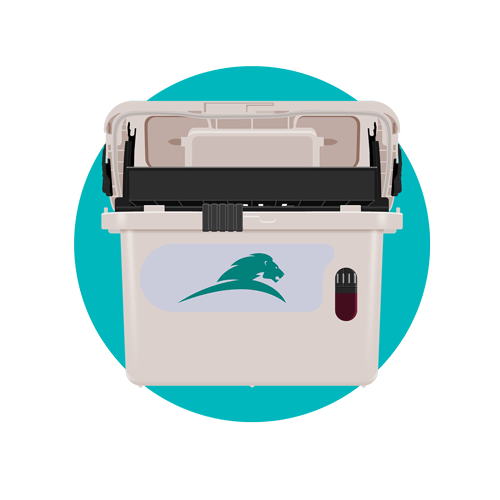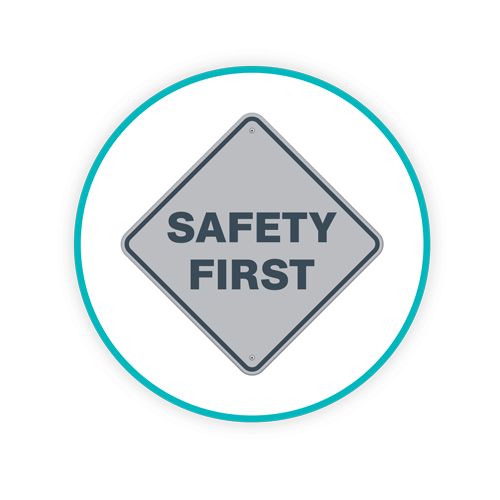Reducing Needlestick Injuries in a Pediatric Setting

The practice of medicine requires the frequent use of needles and other sharp objects, and without proper safety protocols in place, that can lead to potentially dangerous injuries to patients and staff alike. In the United States alone, there are approximately 320,000 needlestick injuries (NSIs) every year, a conservative estimate since not every injury is reported. The estimated cost of a single NSI treatment in the US ranges between $500 to $3,000. However, these figures do not include long-term treatment costs associated with any illness contracted from the injury or litigation and compensation costs.
In care facilities, there are always patients or visitors across the age spectrum. With that, you can imagine the dangerous attraction of having small, brightly colored containers positioned “just at the right height” for a curious child to investigate. These dangers are further magnified in pediatric settings where children are commonplace. As a company, over our 35-plus years of experience we have heard countless stories of small children suffering needlestick injuries when exploring unsafe sharps containers. One story tells us how a three-year-old placed his hands into an open-lidded sharps container to retrieve an object he had dropped inside, subsequently receiving punctures from seven different needles.
investigate. These dangers are further magnified in pediatric settings where children are commonplace. As a company, over our 35-plus years of experience we have heard countless stories of small children suffering needlestick injuries when exploring unsafe sharps containers. One story tells us how a three-year-old placed his hands into an open-lidded sharps container to retrieve an object he had dropped inside, subsequently receiving punctures from seven different needles.
When a scenario like this arises, it is the fallout that can be most traumatizing to children and their guardians: trying to determine the medical history of the contaminated needles, exposing a child to strong preventative medications, and waiting for months to determine whether a life-threatening illness has been contracted through the exposure. As this incidence demonstrates, the “Candy Test” is a great way of looking at the overall safety of a sharps container. Put simply, the Candy Test asks – if a piece of candy is dropped into a medical waste sharps container, is there any way it could be retrieved?
If the answer is “yes,” as in the story above, your containers do not pass the test, meaning there is more you can be doing to make your practice safer.
How to pass the candy test?
With preventative measures, we can avoid scenarios like this occurring in the future. There are now safety engineered devices, smart retractable syringes, and the availability of blunt needles to mitigate the risk of needlestick injuries. Nevertheless, facilities need to invest in the safety of their staff, patients, and the general public to make this a reality.
Strategically designed containers, like those provided by Daniels Health, have safety features with secure trays, restricting hand access. This clinical design minimizes risk by enabling single-action sharps disposal. The safety tray is activated by the weight of the waste with a single swing action, and the safety-tilt mechanism releases sharps safely into the container away from the user. It is this swing-action safety tray that effectively conceals the container to ensure no hands ever encounter contaminated sharps.
There is still widespread usage of open access containers, which allow sharps to be overfilled and exposed to caregivers, patients, and the public. This means sharps can be easily accessed or fall out of containers.
What steps can you take to improve safety and reduce NSIs in your pediatric facility?
In the facility:
- Implement the use of clinically engineered devices, including sharps containers with safety trays and secure locking systems. This will protect staff, patients, and other visitors in the facility.
- Analyze needlestick and other sharps-related injuries in your workplace to identify hazards and injury trends. Ensure containers are appropriately placed and out of reach from young patients who may be curious about the small colorful containers.
- Ensure that healthcare providers receive proper training in the safe use and disposal of needles, including access to comprehensive educational resources.
- Establish procedures – and encourage reporting and timely follow-up – for all needlestick and other sharps-related injuries to ensure proper treatment and improve prevention efforts.

As a healthcare provider:
- Plan for safe handling and disposal before beginning any procedure using needles. Ensure sharps containers are out of reach for pediatric patients.
- Dispose of used needles promptly in appropriate sharps disposal containers. Use the temporary lock if your container provides this safety feature (which it should!). Once filled, permanently lock the container.
- Report all needlestick and other sharps-related injuries promptly to ensure that you or the affected individual receives appropriate follow-up treatment.
- Tell your employer about hazards from needles that you observe in your work environment.
- Participate in bloodborne pathogen training and follow recommended infection prevention practices.
How can you create a safer environment for pediatric patients in your facility? Think about prioritizing safety for all individuals who enter your facility, from staff and patients to visitors. By arranging a walk-through audit to identify risks and recommend best-practices you can make healthcare in your facility safe for all.
Let's Talk!
Your time is valuable, and we don’t want to play hard to get. You can either phone us directly on the details listed on our contact page, or feel free to fill out this short form and one of our team members will get back to you as quickly as possible.
